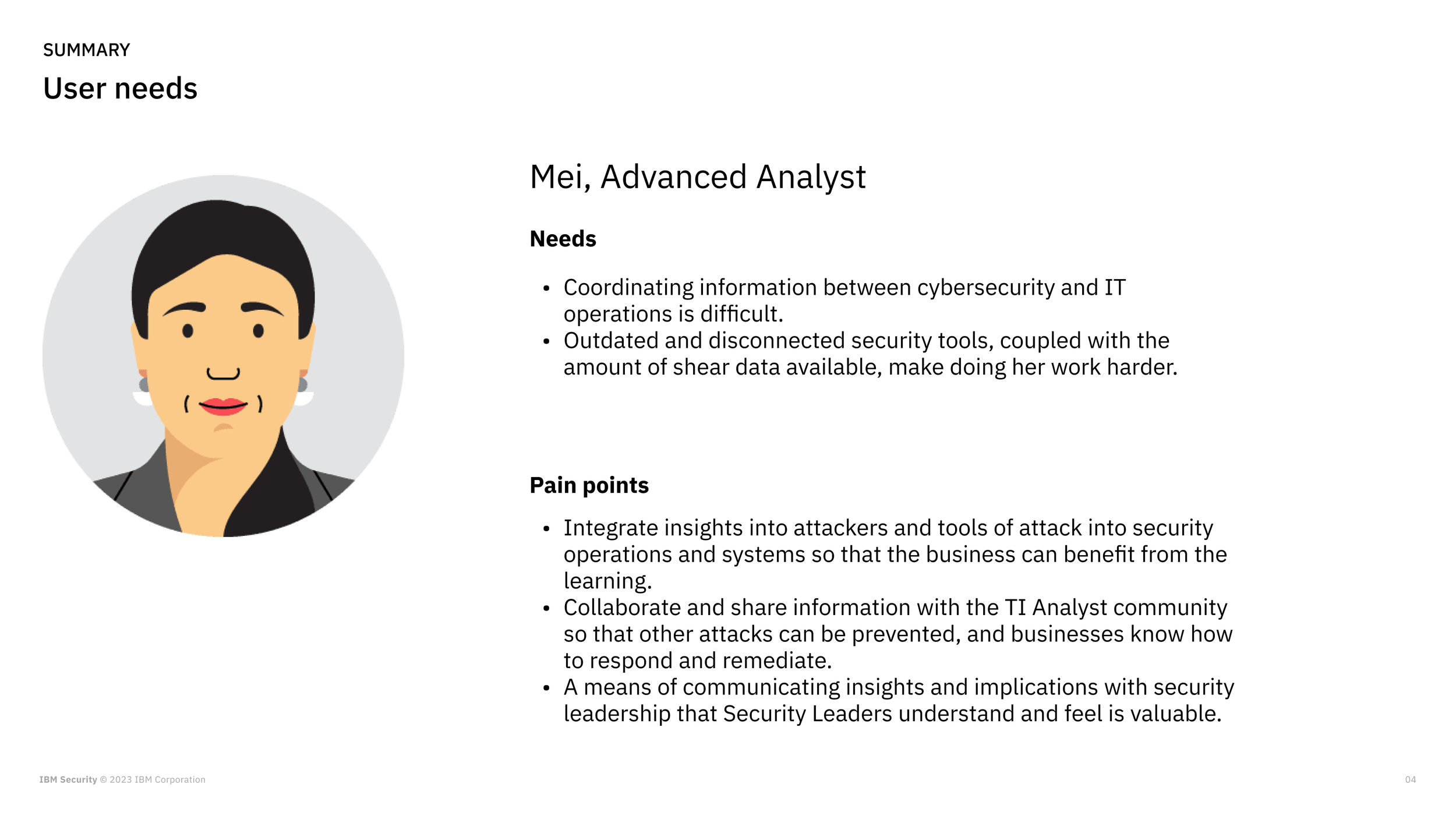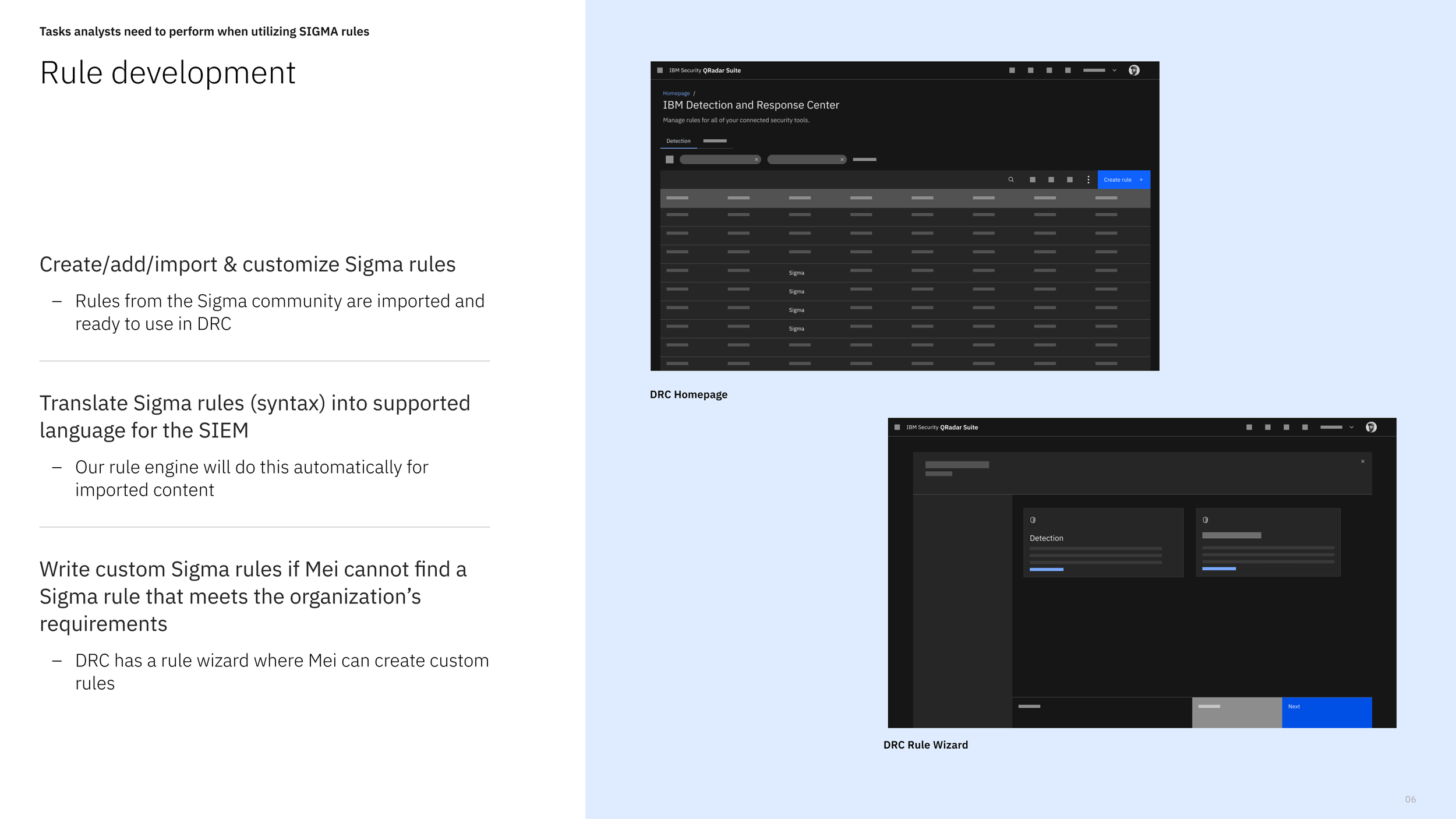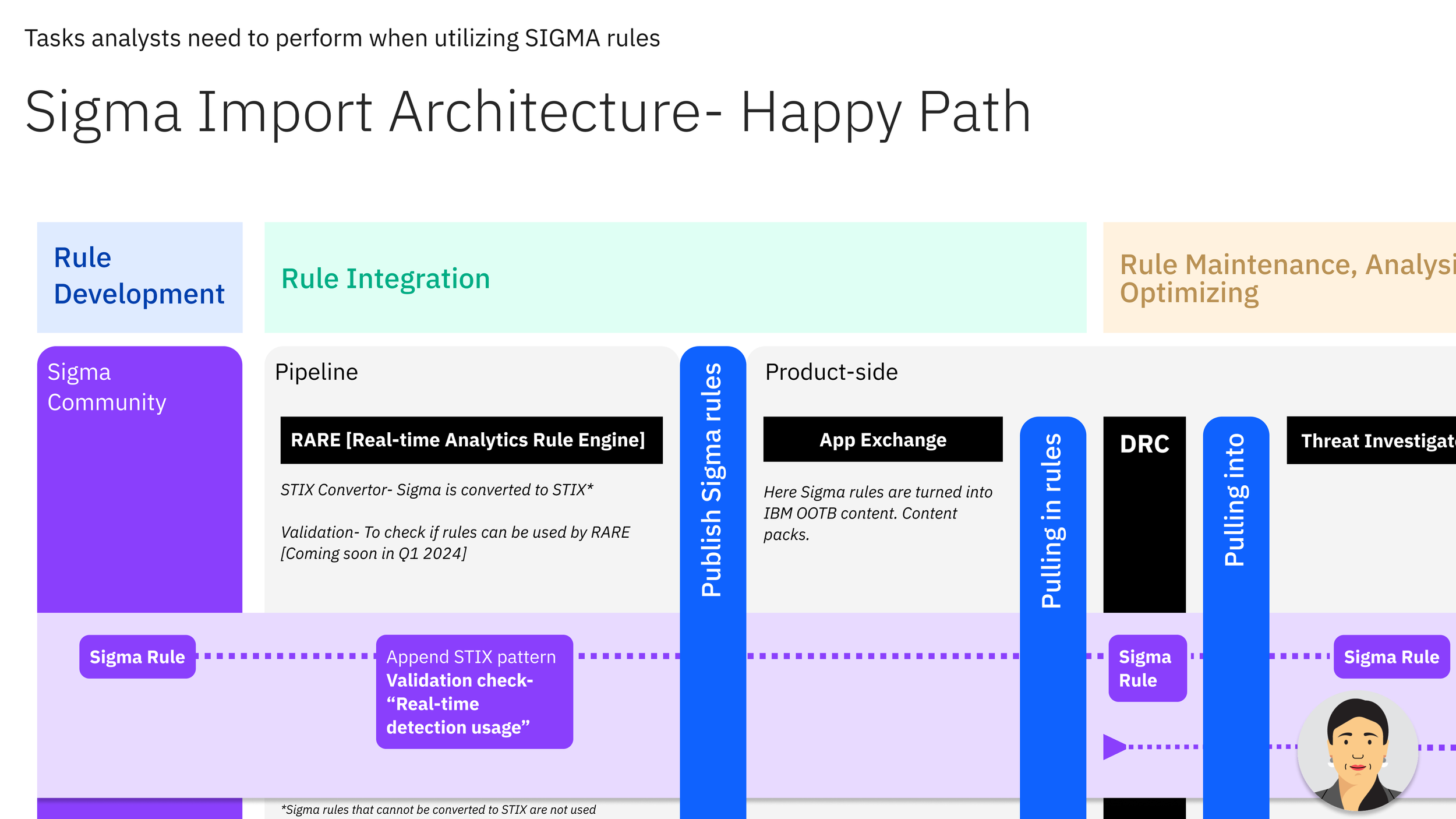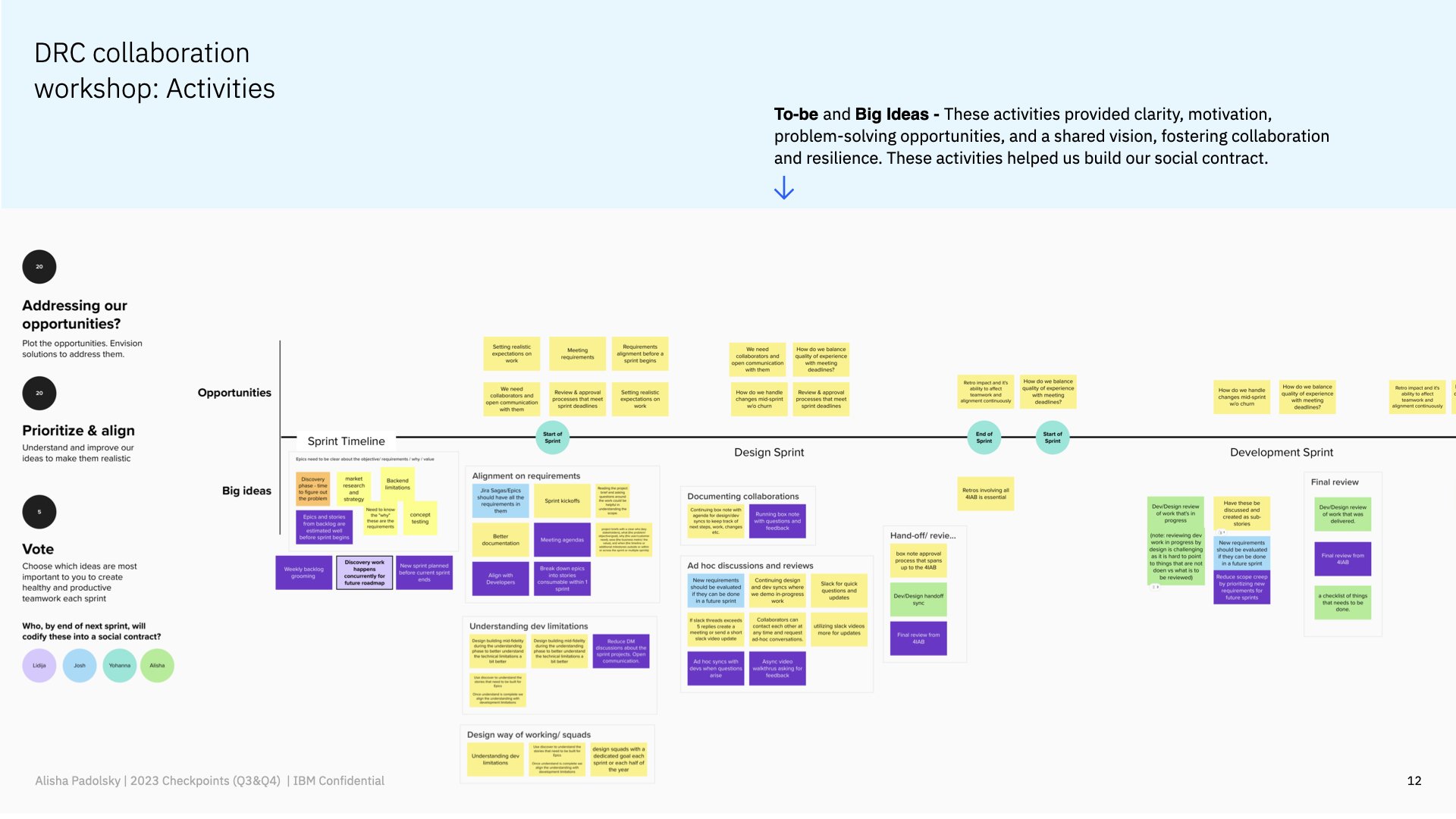
Detection and Response Center (DRC)
IBM Security QRadar
Project overview
In 2023, IBM's Detection and Response Center (DRC) project focused on integrating Scheduled rules to streamline security operations. These rules empowered analysts to automate routine security tasks, improve threat detection, and ensure compliance, offering a transformative solution for Security Operations Centers (SOCs). As the UX design lead, I played a pivotal role in shaping this vision, ensuring the system was efficient, scalable, and user-centric.
Team
IBM Security
Year
2023
Role: UX Design Lead
Design Lead Responsibilities: Leadership, Strategy, Team Development
Team: 2 UX Designers, and 2 visual designers
Design lead role
I collaborated with cross-functional stakeholders to define a user-centered vision for integrating scheduled rules. This included:
Understanding user needs: Conduct workshops and interviews with analysts to identify pain points and requirements for discovering, scheduling, and managing rules.
Design strategy: Establishing a roadmap that balances immediate user needs with long-term scalability and alignment with business goals.
Prioritization: Working with product managers and engineers to prioritize features that delivered the highest impact while staying within technical and timeline constraints.
Strategy and vision
I led the creation of intuitive workflows to empower security analysts to:
Discover rules: Designed user-friendly search and filtering mechanisms to help analysts quickly find relevant rules.
Schedule rules: Developed streamlined processes for setting and customizing scheduled regulations to meet specific organizational needs.
Error prevention and feedback: Introduced real-time validation and feedback mechanisms to reduce errors and increase user confidence.
As the leader of a small but dynamic design team, I prioritized building a collaborative and high-performing environment:
Mentorship and coaching: Supported team members in developing their skills, particularly understanding the complex cybersecurity domain.
Design rituals: Introduced regular design critiques and design/dev syncs to ensure alignment, feedback, and collaboration.
Domain expertise: Facilitated expert-led sessions and hands-on learning opportunities to equip the team with the knowledge needed to tackle cybersecurity challenges.
Designing a seamless user experience
Bridging design and technology
I worked closely with engineering teams to ensure the feasibility and implementation of our designs:
Technical alignment: Partnered with developers to understand system limitations and align designs with technical capabilities.
Iterative design process: Maintained an agile approach, iterating based on user feedback, testing, and development constraints.
Cross-functional communication: Acted as a liaison between design, engineering, and product teams to align goals and priorities.
Team leadership and development
Bridging design and technology
“It’s been great working with you this quarter. As we worked on Q4 commitments, you helped greatly in communication with the design team. You helped ensure we are all on the same page and that all of the dev questions are responded to in a timely manner and with consideration of everybody's input.”
— Lidija G.
DRC Development Product Owner & Manager

Mei, Advanced Analyst: User needs

Rule development

Rule architecture

Scheduled detection rules: Artifacts and tickets

DRC collaboration workshop

Scheduled rules outcomes
Leadership
My leadership in the DRC project resulted in:
User-focused innovation: A scalable, intuitive system that addresses analysts' needs for automating and managing rules effectively.
Improved team performance: Empowered the design team to overcome domain challenges, confidently producing high-quality work.
Streamlined collaboration: Strengthened partnerships across disciplines, ensuring alignment and efficiency in delivering solutions.
Enhanced security operations: Delivered a solution that improved threat detection and compliance while freeing analysts to focus on higher-value tasks.
Impact
Leading the DRC redesign was a rewarding experience that underscored the importance of strategic leadership and cross-functional collaboration. My greatest achievement was delivering the rules system successfully and fostering a culture of growth and innovation within the design team.
Case study available upon request.
